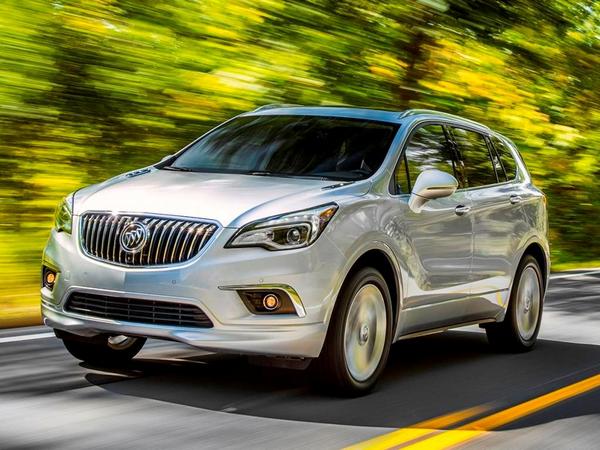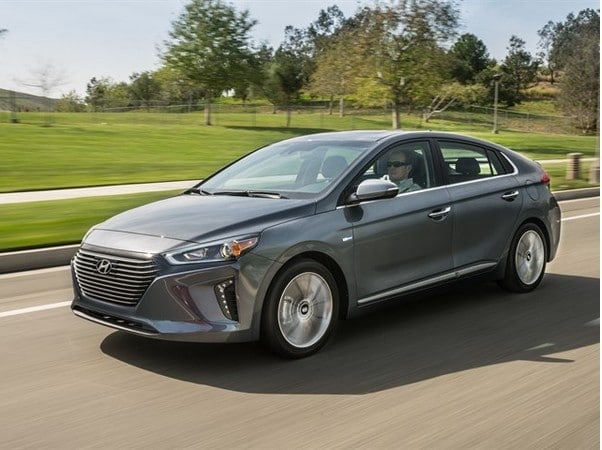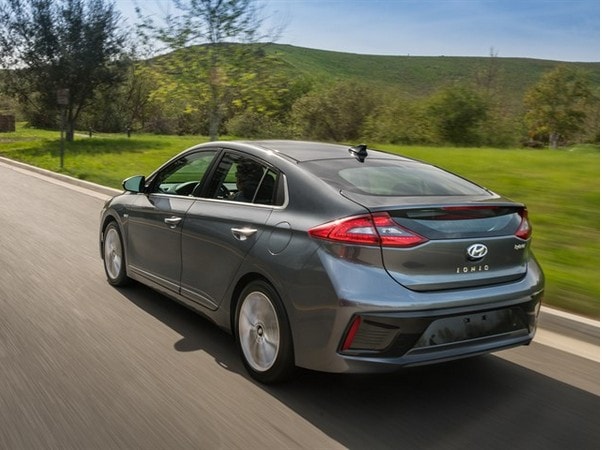
While sales of crossover SUVs and trucks remain hot, a surprising development is the resurgence in compact cars, as midsize sedans continue to fade. Evidence of this shift can be found in the fact that the perennial leader in traditional car sales, the Toyota Camry, may soon be overhauled in volume by the smaller Corolla and Honda Civic, the latter of which offers both sedan and hatchback body styles.
Small car sales have declined only 3 percent, while larger cars have dropped by 23 percent, according to Automotive News. Beyond the Corolla and Civic, other economy cars like the Ford Fiesta, Hyundai Accent, Toyota Yaris and Chevy Spark, as well as the larger Cruze, have posted sales increases of 40 to 50 percent. Kelley Blue Book analyst Tim Fleming told the trade journal that “These small cars are really your entry-level new cars. There’s always going to be a market for that kind of car, simply because of the price point. It’s the midsize to full-size car range that people are instead going to SUVs,”
Contributing to this trend is the rise in average transaction prices, which last year topped $35,000. At some point, buyers of traditional vehicles who don’t opt for a crossover SUV may be faced with the prospect of downsizing into a smaller and less expensive car to keep their monthly payments in check without having to resort to longer term loans or leasing as a way to maintain affordability.
There’s also evidence of a possible slowdown in the crossover and SUV segments as manufacturers are pushing more incentives towards those models to maintain share in these higher-margin categories. At the same time, they are dialing back on rebates and lease deals for sedans. For instance, Buick is offering as much as $4,000 in price reductions and cash back on the 2017 Encore Preferred and $5,000 in discounts and rebates on the 2017 Envision Essence. Meanwhile, by offering fewer incentives on slow-selling sedans, makers prefer to take a hit on volume rather than sell those vehicles at a loss.
Also: Kelley Blue Book Best Buy Awards of 2017
Used vehicle leasing fizzles
Once seen as a way to cope with a flood of late model new vehicles coming off lease by turning them around and offering them on certified pre-owned (CPO) leases a second time, auto makers are discovering that there is little appetite on the part of consumers to take up these offers. Part of the problem is that the lease payments on these used units are too close to those for new vehicles, due in large part to manufacturer-backed incentive programs.
“Used leasing doesn’t work very well,” Tim Russi, president of Ally Financial’s auto business told Automotive News. “As prices drop on used cars and if incentives stay at the level they are, maybe even retreat, the payment differential will gap out. We think long term [it] could be a viable product when the right dynamics are there.”
Part of the problem with used car leasing is their nature of the vehicles themselves. Because of mileageand depreciation differences, no two units are alike, making it more difficult to project future resale values. Melinda Zabritski, Experian’s director of automotive finance, told the paper, “When you have a new car, you’re solid on all of it. You know where that starting point is. But in the used market, that starting point is a moving target, so I think it’s a little more difficult to set those residuals and have a very systematic approach to your residual planning.”
So in other words, until there is a large supply of late model CPO vehicles on the market in an environment where manufacturers’ aren’t subsidizing their new models with generous incentives, don’t expect to see any big changes in the way CPO cars are retailed…or in this case, leased.
Hyundai prices Ioniq
Hyundai is launching the industry’s first family of hybrid, plug-in hybrid and EVs in its 2017 Ioniq and has announced pricing on its conventional hybrid and electric versions. The introduction and pricing of the plug-in hybrid version will come later this year. For now, the Korean brand is significantly undercutting the price of the 2017 Toyota Prius, which starts at $24,685 by offering the base Ioniq hybrid at $22,200. The next step up is the Ioniq SEL at $23,950. The top-end Limited hybrid will retail for $27,500. The destination charge for the Ioniq is $835 compared to the Prius’ delivery of $885. Toyota does have a less-expensive hybrid in the form of the Prius c which starts at $20,150. However, that vehicle is not only smaller, but also is based on Toyota’s previous-generation hybrid technology.
The EV version of the Ioniq has a base price of $29,500 plus $835 destination, while the top line Limited trim level will sell for $32,500. All Ioniq models feature front-wheel drive.
Aston Martin unveils CPO program
Aston Martin is the latest upscale manufacturer to introduce a Certified Pre-Owned vehicle program through its dealer network. Among the features of its Timeless CPO program is a one-year limited warranty with roadside assistance, a multi-point technical inspection that includes hardware and software updates, a certificate verifying the vehicle’s Aston Martin provenance and a verified service history. In addition to a VIP handover package, buyers are also eligible for discounts on dealer accessories for up to three months. Timeless CPO includes all Aston Martin models up to 10 years old.
“Additions such as the new inspection regime – which for the first time includes a comprehensive assessment and review of our cars’ software, as well as their technical condition – can only add confidence for our buyers,” said Aston Martin vice president and chief sales officer Christian Marti. “Aston Martin rightly prides itself on its personal customer service, attention to detail and luxury, and with the debut of the Timeless CPO program around the world, I know we are better placed than ever to continue to improve these elements of our business.”
Also: Class of 2018 – New Cars Ready to Roll
Inventories grow
The supply of vehicles in the auto industry’s inventory grew to 85 days’ worth, signaling that makers are building more cars than the market can take. The number of vehicles in the pipeline on Feb. 1 is up 8 days over the same time last year and 22 from Jan. 1. The days’ supply figure translates to the number of days it would take to move all the existing vehicles in inventory at the current sales rate.
The growing stocks affected all makes, particularly GM, which saw its number balloon from 71 to 107 days. Even industry leader Subaru, which had running a tight inventory of 26 days saw its supply increase to 36 days’ worth. By brand, Buick had the highest supply at 194 days. Hyundai-Kia was able to control its inventory the best, seeing only a 4-day increase in inventory from 58 to 62 days. The glut of vehicles could signal the start of heavy discounting and incentives during the coming months.
The rundown
Check out the This Week in Car Buying Podcast here.
In anticipation of the spring selling season on the horizon, there’s no better time to get a start on your shopping list with a visit to Kelley Blue Book’s Top 12 Family Cars.
If you’d like to go far on a single tank, the 2017 Chevrolet Cruze Diesel may just be the ticket. This oil-burning Chevy earned an EPA rating of 52 mpg highway for a 6-speed manual version.
Jaguar has released info on its 2018 models due later this year. In the cards is a revamped turbocharged 4-cylinder base engine in its F-Pace crossover SUV and the XE and XF sedans.
In the market for a new car? Explore these useful tips on how to get the best deal:
Kelley Blue Book’s Complete Guide to Incentives
All you need to know about leasing
Which dealer services are right for you?
What to look for in your next economy car









